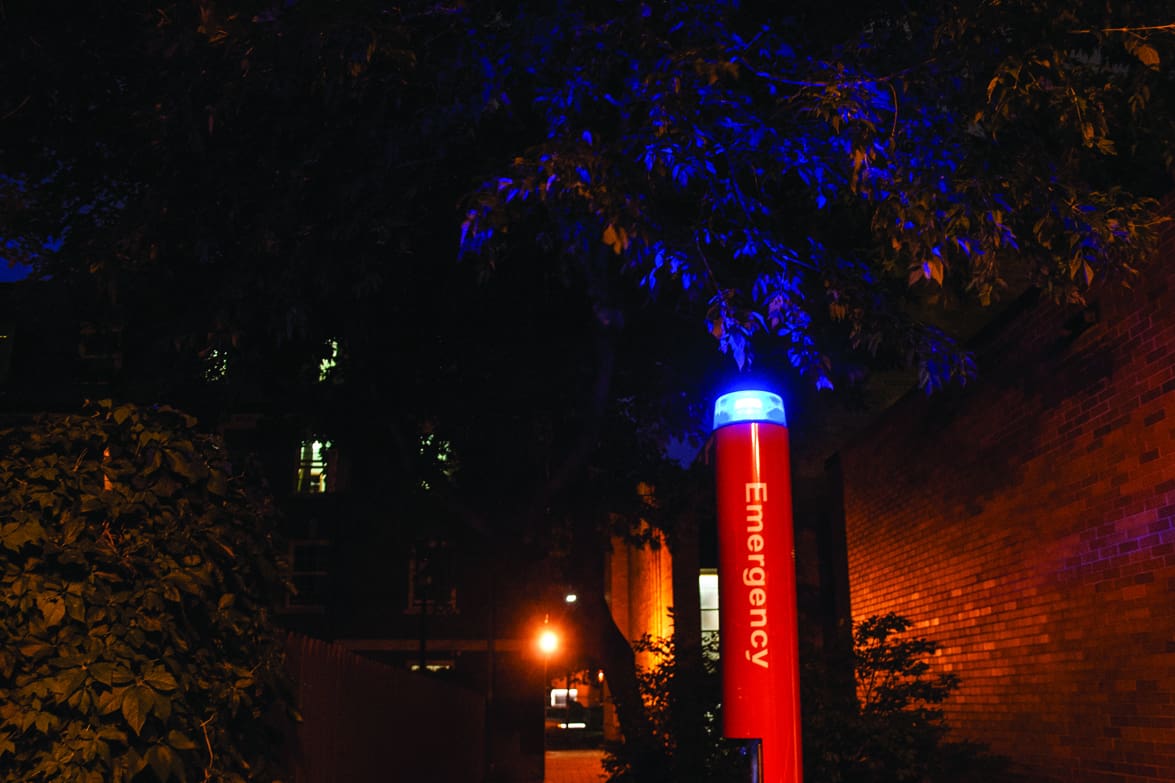Earlier this month, several orientation leaders from Carleton University were photographed wearing tank tops that said “Fuck Safe Space.” The crude slogan was chosen to poke fun at recent attempts on the part of university administrations across the country to establish and protect safe spaces on campus in response to sexual assault and harassment. This scandal is one of the many recent incidents that have sparked concerns about sexual violence on Canada’s university campuses.
Last year, three McGill University football players faced charges of forcible confinement and sexual assault with a weapon, while six related sexual assaults occurred at the University of British Columbia (UBC). UBC and St. Mary’s University also came under fire for their frosh chants, which encouraged non-consensual sex. Just last month, two University of Ottawa hockey players were indicted for sexual assault.
It is unsurprising, then, that the Ontario Women’s Directorate reports that 15 to 25 per cent of college and university-aged women will experience some form of sexual assault during their academic career. Of course, no one is denying that men are victims of sexual violence too, but it is important to note sexual assault is a gender-based crime. Statistics Canada has reported that women represent 87 per cent of sexual assault victims, while 97 per cent of persons accused of sexual offences were male. This phenomenon can be traced back to various entrenched historical social norms, such as viewing women’s bodies as sexual objects, aggression as fundamental to masculine identity, women’s virginity as a prize, and so on.
I assume most students accept that sexual violence is a pervasive gender-based crime, because the statistics and anecdotes are easy enough to Google. In fact, I feel my peers have been increasingly aware and vocal, showing solidarity through rallies like SlutWalk and Take Back the Night. In particular, I applaud our student leaders for eliminating discriminatory frosh chants. Their actions represent an obvious recognition of the problem, and a dedication to solving it.
Such student-driven endeavors are necessary, but insufficient for ensuring social change. While students’ awareness is integral to solving problems of sexual violence, more should be done to make sure this movement does not lose momentum. Top-down administrative changes must occur in order to complement and bolster student activism.
In particular, the university needs to make a public, principled commitment to eliminating sexual violence. It should not take a high profile sexual assault case to prompt us into hastily convening a working group on sexual harassment procedures, like in UBC or McGill. The administration needs to assert its leadership and act now.
Currently, U of T is rolling out a new bystander intervention program, while offering resources for sexual violence survivors through the Campus Safety Office, Sexual Harassment Office, and Ask First Campaign. While these programs are admirable, the university lacks an updated, formal policy that outlines standards of behavior regarding sexual violence.
The most relevant existing policy concerns sexual harassment exclusively, and was published in 1997. Its definition of sexual harassment is only a subset of sexual violence, and thus fails to explicitly address more diverse issues of stalking, molestation, voyeurism, cyber-violence, and rape. The university would benefit from a new policy that specifically acknowledges the broadness of sexual violence, to ensure that all victims understand they can receive due process. Indeed, the Ontario Government recommends such a plan in their 2013 university resource guide, Developing a Response to Sexual Violence.
The new policy should also emphasize survivor rights. Given the persistent stigma around sexual violence, many survivors stay silent for fear of reprisal and disbelief. Indeed, Statistics Canada’s latest General Social Survey results show that 88 per cent of sexual assaults go unreported. As such, the policy should emphasize that survivors will be believed and treated with respect, confidentiality, and compassion; creating a safer space from which to pursue due legal process.
To promote accountability, the policy could also model itself after Yale University and mandate yearly reports, which summarize sexual violence complaints and their outcomes. The privacy of individuals involved should of course be respected, but the complaints procedure would be transparent otherwise. This practice would raise awareness of available complaint options, and publicly record the university’s progress in combatting sexual violence.
While it is undeniably difficult to enforce such a policy, the university’s formal commitment has enormous symbolic significance already. Creating a sexual violence policy shows that the administration, much like our orientation leaders, is recognizing a problem and recognizing its responsibility to solve it. This action would show solidarity with the student movement and validate survivors’ experiences. This in turn would give students more confidence to continue agitating for change, because we would have the university’s formal authority to rely on.
As powerful as student activism can be, the administration holds significant institutional power over us — they make rules we have to follow. In the fight against sexual violence, then, the university has a responsibility to use its exclusive policy-making capabilities in order to fuel important social change.
Victoria Wicks is a second-year student at Trinity College studying political science and philosophy.


